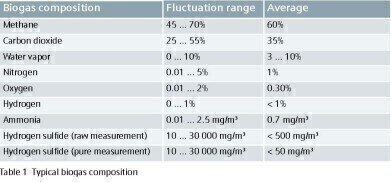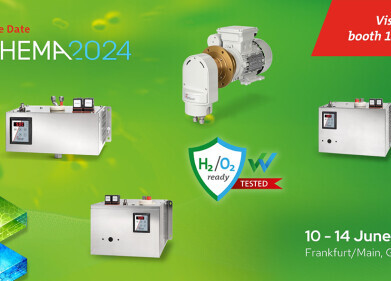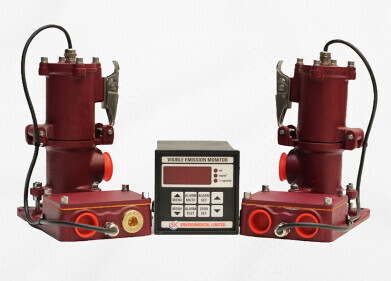Air Monitoring
Biogas – the Natural Source of Energy with a Balanced CO2 Offset
Jul 18 2013
A biogas plant requires daily support and control, as it involves a sensitive biological process. Key process characteristics are, for example, the temperature, the dwell time and rearrangement of the substrate, as well as the quantity and frequency of the substrate feed. In order to optimise and control the plant, it is absolutely essential to analyse the gas composition on a continuous basis.
Table 1 shows the typical compositions of the main components of biogas in the fermenter prior to purification.
Essentially, the process of biogas production consists of fermentation, processing and purification.
The fermenter is the heart of the plant, as this is where the majority of the biogas is produced. The typical agricultural fermenters are tower constructions, usually with a capacity of at least 1 000 m•, part of which is sometimes below ground level. Inside the fermenter an agitator ensures the necessary homogeneity of the substrate and prevents the formation of sinking and floating layers.
In conventional biogas plants, condensate separators and pollution filters are used in the preparation and purification stage, in order to not only remove solids carried by the gas flow, but also to prevent the icing of gas lines and to avoid corrosion.
The desulphurisation (H2S removal) is also an important element of the gas purification. The H2S in the gas can be separated by means of chemical, physical or biological procedures. In agricultural renewable resource biogas plants, the H2S components are usually removed by blowing in air.
Apart from the legal requirements for infeed into the gas network and the requirements for the protection of the motor when generating electricity, it is necessary to remove the hydrogen sulphide (H2S) for the general protection of the materials used in the overall plant, since H2S has a strongly corrosive effect in combination with water.
In addition, higher concentrations of hydrogen sulphide in the biogas are problematical, as sulphur oxides are created during the combustion. These also have a greater corrosive effect on metallic plant components and also acidify the motor oil used in combustion engines. As a rule, for safe CHP operation, limit values of between 100 and 500 ppm H2S in the biogas must not be exceeded. Considerably more stringent requirements apply to the feeding of gas into the network and for the protection of gas-fueled engines.
In principle, there are various options for using biogas obtained from the fermenter. Apart from conversion into heat, fuel and/or electricity, it can also be fed directly into the gas network.
The biogas production is ideally monitored and controlled by a continuous measurement of methane (CH4), carbon dioxide (CO2), oxygen, and hydrogen sulphide.
For the various measurement points used in biogas applications, the continuous-measurement ULTRAMAT 23, ULTRAMAT 6, OXYMAT 6, the gas chromatographs MicroSAM and SITRANS CV, and for special applications the MAXUM Ed II are used for analytical purposes.
Digital Edition
IET 34.2 March 2024
April 2024
Gas Detection - Biogas batch fermentation system for laboratory use with automatic gas analysis in real time Water/Wastewater - Upcycling sensors for sustainable nature management - Prist...
View all digital editions
Events
May 06 2024 Minneapolis, MN, USA
May 13 2024 Munich, Germany
May 15 2024 Lund, Sweden
May 15 2024 Frankurt-am-Main, Germany
May 20 2024 Columbus, OH, USA


















